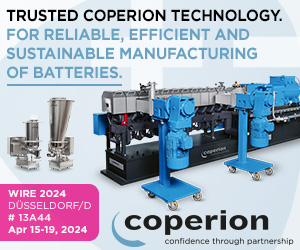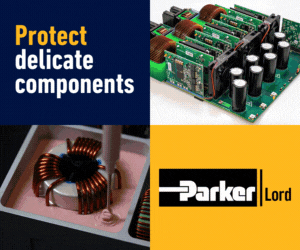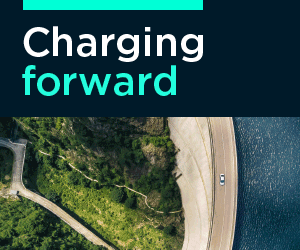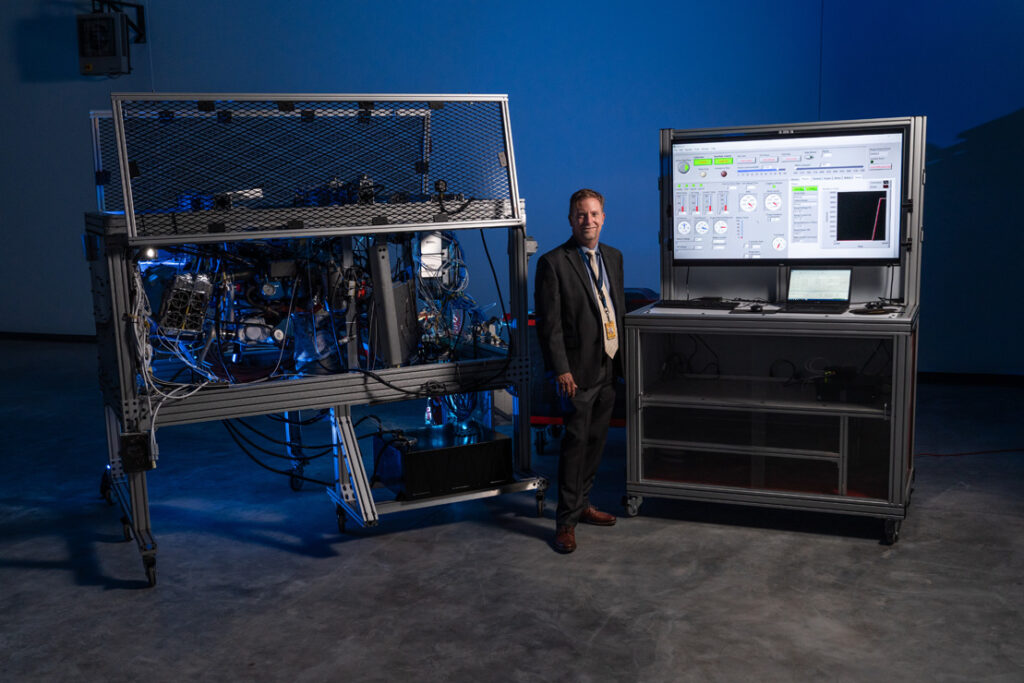Dr Pat Anderson
(Images courtesy of VerdeGo Aero)
VerdeGo Aero’s CTO talks to Rory Jackson about how his academic work feeds into the company’s commercial development of aviation technology.
Aviation has been a constant presence in Dr Pat Anderson’s life. One of his earliest memories is being visited at the age of five by his uncle, a veteran of the Vietnam War and then serving in the US National Guard, who turned up by landing a Bell 47 helicopter in his parents’ front yard.
That and many similar experiences gave Dr Anderson plenty of opportunity to be around and fly aircraft during his youth, and led to his current position as CTO and co-founder of VerdeGo Aero, an electric aerospace engineering company headquartered in Daytona Beach, Florida. He has also led the development behind his company’s unique hybrid-electric powertrain architecture, an offering that stands to bring considerable energy and cost improvements to the world of aerial mobility.
Creating that system took extensive research throughout much of Dr Anderson’s academic career, although he himself notes that going to university had been an unlikely avenue for him. He had been raised in a family where noone had attended college or university, and he says that in his late teens he had no knowledge of scholarships or enrolment.
“I wanted to be a pilot though, and getting a degree in aerospace engineering would set me on that path,” he recalls.
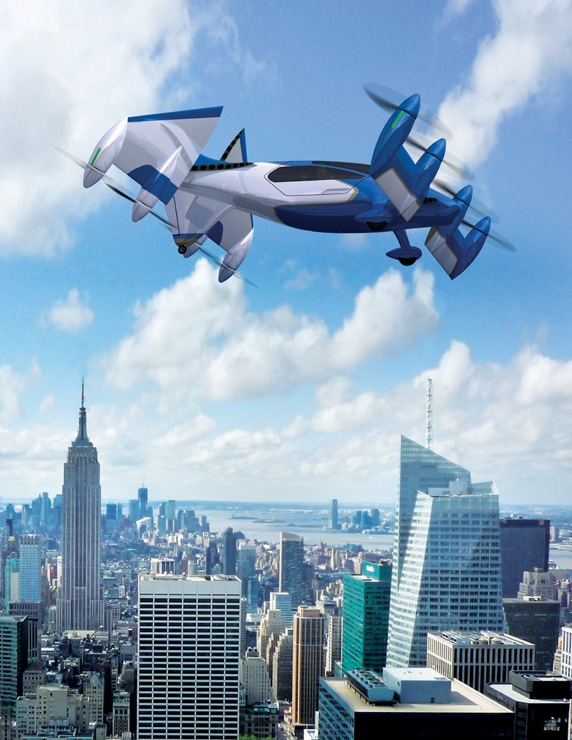
“The local Penn State campus had an aerospace engineering programme, so I signed up for that in 1986, but soon realised that wasn’t necessarily the right direction to go in to become a pilot. But I did well in it, and at the same time I got a private pilot school scholarship through the Civil Air Patrol.”
After getting that licence he moved to State College, near the Penn State campus, and soon took to flying and towing glider aircraft, which he often did during his undergraduate years.
While studying at Penn State for a Master’s in aerospace engineering, he achieved all the glider ratings up to CFI (Certified Flight Instructor), then achieved the same for powered fixed-wing aircraft while continuing his studies and research, and even teaching at the flight testing laboratory in between his own classes.
From Pennsylvania to Florida
After gaining his Master’s, and wanting to continue his career in aerospace and academia, he attended the Embry- Riddle Aeronautical University campus at Daytona Beach, in 1996.
“At the time, I knew the thenpresident of Embry-Riddle, Dr Steven Sliwa,” he says. “Back then, Embry- Riddle was very much a teaching school, not necessarily much of a technology hub, and not a lot of the people there had PhDs. Steve wanted to change that and make it more of a leader in research and innovation.
“I remember thinking how great it was – they’ll let me fly, do engineering research – but Steve told me he wouldn’t hire me as a professor, because he was going to change the teaching requirements to require a PhD.”
Sliwa told Dr Anderson that he was certainly qualified for a flight instruction role, which he took on, then signed up for the University of Central Florida’s doctoral programme in mechanical engineering. He completed the PhD in 2003, although Embry-Riddle had noted his progress during his research and already moved him away from engineering and into teaching.
He remains in his role as Professor of Aerospace Engineering at Embry- Riddle, and runs the Eagle Flight Research Centre there, where all manned and unmanned aircraft undergo flight testing for FAA certification. He became its head in 2007, but since then has also formed VerdeGo Aero with Eric Bartsch and Erik Lindbergh, to develop and commercialise one of his projects.
Hybrid air power
VerdeGo Aero is located at the MicaPlex, on Embry-Riddle’s campus. It serves as a research park and springboard for technology transfers between academic research and private enterprise.
There, the company has access to the university’s engineering laboratory, wind tunnel and other facilities including the Eagle Flight Research Centre, as well as several hangar bays. It also has its own offices and engineering laboratory dedicated to developing its hybrid powertrain systems.
“My interest in hybrid-powered flight originated in the late 2000s. In my capacity as a university professor, we’d been looking at alternative propulsion architectures in all sorts of ways,” Dr Anderson says.
“In 2009, we’d investigated unleaded aviation fuels and alternative liquid fuels for conventional propulsion, but then we started looking seriously at hybrid and electric propulsion as a longer-term research area.”
In 2011, NASA’s Green Flight Challenge – an annual competition aimed at fostering and proving advances in cleaner, more energyefficient aerospace technologies – came around. Its target was 200 passenger-miles per gallon, for which Dr Anderson assembled a student team, acquired a Stemme S10 motorglider aircraft (a holdover from his gliding days) and converted it to use a parallel-hybrid powertrain.
“We took out the Limbach engine and put in a modified Rotax with a 40 bhp electric motor, before developing battery packs and putting four of them across the wing spars,” he says. “We flew it in the Green Flight Challenge, and it turned out to be the world’s first manned parallel-hybrid aircraft.
“We didn’t win though, because the competition was geared towards battery-electric airplanes; however, our project was more commercially viable than the others.”
The main reason for that comes down to the specific energy of batteries, which remains woefully below that of liquid fuel. As Dr Anderson notes, most aviation fuels offer around 7.3 bhp-hours/lb, while battery packs can store only about 0.1.
“That’s not a small margin,” he says.
“There are a lot of great things about battery-electric propulsion – it can be greener, it allows different configurations and it reduces noise, because you can run motors with lower prop-tip Mach numbers. But by examining the growth trends of specific energy over the past 10 years, we just don’t see batteries helping any but the smallest aircraft for the foreseeable near future.
“Hybridisation solves that ‘upstream’ problem, from energy storage to power creation, and using a diesel reciprocating engine is much more fuel-efficient than a turbine. It’s a step towards getting a lot of the benefits of electric propulsion without attempting the complex and problematic all-battery route. But in the long term, maybe 15-20 years from now, I think battery electric flight will be possible at scale.”
IDEP
VerdeGo Aero was formed in June 2017, with the intention of building airframes. However, after researching the market for electric and hybrid aircraft, Dr Anderson and his colleagues decided it would not be a good place to compete for investment, particularly since investors seemed too willing to fund whichever companies made the most grandiose and scientifically unsound claims for their aircraft’s capabilities.
“We have therefore focused on the upstream part of electric flight – the energy storage and generation – rather than the downstream part such as the wings, rotors, props and hull aerodynamics,” Dr Anderson says. “We do have test stands with motor-propeller drives, but they’re only integrated for research purposes.
“We know our customers’ and partners’ mileages will vary depending on the aircraft models and propellers they have – that downstream aspect is hard to standardise. On the flip side, if you name any aircraft and its gross weight, we can tell you instantly what its upstream portion consists of.
“That also makes our technology so much easier to certify compared with a full aircraft, since we have comparatively fewer components to put through certification.”
VerdeGo Aero’s hybrid-electric powertrains are now in rapid development, and are based on a technological concept that encapsulates Dr Anderson’s r&d – the Integrated Distributed Electric Powertrain (IDEP).
The IDEP’s componentry starts with a diesel aviation piston engine, which produces shaft horsepower. That output turns a motor/generator which delivers power to a motor controller.
That controller’s inner loop defines and controls the diesel engine’s rpm, with the throttle controlling manifold air pressure to determine the amount of electricity to be generated.
“The motor controller also rectifies the three-phase AC of the generator into DC for our customers at 400 or 800 V nominal on the bus,” Dr Anderson adds.
“The bus is typically hooked to a battery pack of our design. If you want a vehicle with long endurance we’d recommend what we call an Energy Pack, integrating something like Panasonic NCR 18650 cells. If you just want batteries to boost take-off, as in a VTOL-transitioning craft, and you don’t need a lot of energy, just a lot of power, then we’d suggest a Power Pack, which uses something like a Samsung 20S as the base cell.”
Heat from the battery packs is managed through an unusual immersion cooling approach. This makes use of a dielectric fluid to immerse both the battery and the internal electronics. The fluid also acts as a fire suppressant, which is expected to help meet the safety and regulatory requirements of high-energy batteries in aviation.
“We can also package some kind of DC-DC converter to provide a 28 V supply for avionics and cabin systems,” he says. “Then there’s a vehicle control unit that oversees things like the motor controller’s interloop for holding generator operating conditions, and a middle-layer loop that’s used to match the load to the source.
“We do that by measuring the current going in and out of the battery. If there’s no differential in current, it means the source and load must be matched. Then there’s a final outer control loop that drives the battery’s measured SoC to the desired SoC.”
The IDEP system can also make use of supercapacitors, depending on how much battery capacity is being run, in order to stabilise voltages for safety purposes. While the IDEP’s standard configuration makes ample use of circuit breakers and contactors, meaning a switch can be opened if there’s a safety hazard or malfunction, the engine and generator cannot be immediately shut down in the way a battery or circuit can.
Supercapacitors could therefore be installed to ensure there is somewhere for that electricity to go until the engine can be fully powered down, to prevent voltage spikes that could cause over voltages in the electrical components.
Development roadmap
Dr Anderson anticipates that in final production, most of the IDEP’s large subsystems will be supplied externally. None of them are likely to be COTS, but instead a series of bespoke parts will probably be designed according to VerdeGo’s specifications and IP, as shared with the appropriate partners once they’ve been identified and contracted.
Those parts will then be assembled and subjected to full system tests at VerdeGo’s facilities before being sent out to customers, who will take delivery of the hybrid IDEP system and integrate it into their airframe and downstream propulsion components.
“At Embry-Riddle we started with a prototype hybrid power plant that produced about 87 kW continuous, with a peak of about 130 kW if you combined it with the battery’s output,” he says.
“At the same time though, at VerdeGo we were building what we call our Iron Bird prototype powertrain, which is another architecture we’ve been testing for about nine months now. That uses a Continental CD-265 diesel – Continental are one of our partners – which is a 265 bhp aircraft engine running a very large generator.”
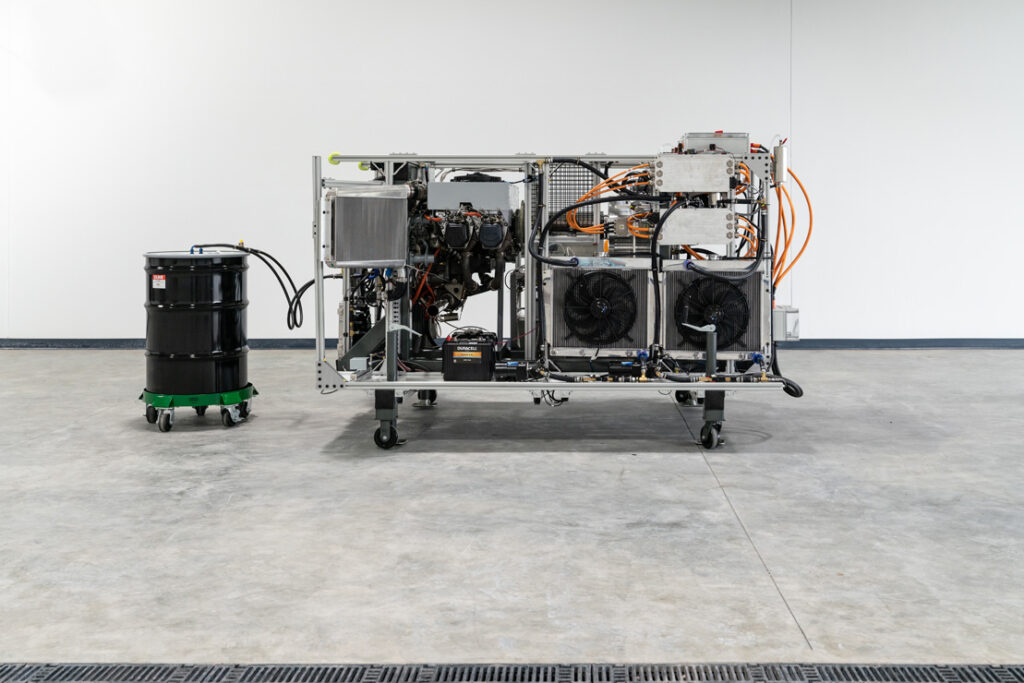
This diesel engine notably enables VerdeGo’s hybrid system to run on Jet-A fuel, and it’s compatible with biofuel substitutes currently under development.
The Iron Bird sits on a large test rig in Daytona Beach, and is run almost every day by Dr Anderson’s engineering team. It marks the company’s first-generation embodiment of the IDEP, with the second generation having been designed to be incorporated into pre-production flight test aircraft for (currently undisclosed) customers.
“The second-generation system is interesting,” he says. “We don’t anticipate it going through certification, it just had so many customers who absolutely wanted it right away, to use in their prototypes. So we fast-tracked the engineering of a version of the Iron Bird that would be airworthy, and that ran for the first time recently.”
Dr Anderson and VerdeGo are also designing what will be their third generation system, which they do envision taking through the FAA’s certification process. True to his earlier description, it consists almost entirely of parts designed to manufacturing and performance specifications set by him and his team – unlike the first generation, which is made from automotive and aircraft parts, and the second generation, which is a mixture of COTS and custom parts.
“We have made real engineering improvements between each generation as well, as in the e-mobility world in general,” he adds. “Take lightening for example. We started with a heavy powertrain, with maybe four times the specific energy of a battery, and now we’re approaching eight times the battery’s energy.”
Much of that has come from the company’s move away from COTS systems to bespoke parts that have been optimised for weight and hence specific power and energy.
“The other really critical factor has been improvements in thermal management,” he says. “Every component in our original prototype’s powertrain architecture makes heat, and none of them were designed to work together, so we needed multiple separate cooling systems, which increased the weight burden even more.
“But now that we’re moving to customised parts that we have simulated and optimised, all the thermal aspects work holistically, to the point that we have a lightweight system that provides sufficient cooling, even in VTOL-transition craft during stationary hover.”
Long-term plans
As mentioned, Dr Anderson and his team are confident that advances in battery technology in the next 20 years will eventually make battery electric commercial flight viable.
To that end, his long-run business plan is to continue intensive inhouse r&d on battery technologies in designs, simulations and laboratory experiments, and to continue supplying high-quality batteries as part of their hybrid-electric solutions.
“What that means is that the battery division of VerdeGo will keep growing in experience and IP, so that when battery-electric flight’s day dawns, we’ll be supporting both hybrid and battery-electric aircraft no matter what our customers need,” he says.
Bio – Dr Pat Anderson
Dr Pat Anderson grew up in Springield, Pennsylvania, attending Holy Martyrs school through to his teen years and graduating in 1986 from Springield High School.
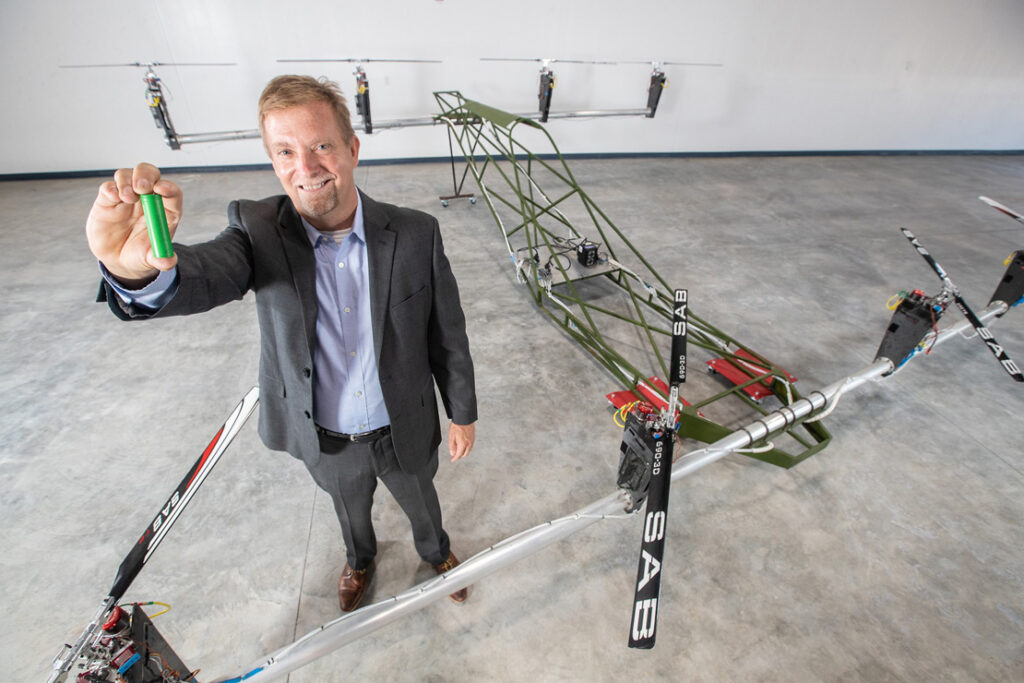
He then attended Pennsylvania State University, gaining an undergraduate degree in aerospace engineering in 1991 and finishing a Master’s in the same subject in 1993, before moving to Embry-Riddle University in Florida.
Soon after, he entered the PhD programme for mechanical engineering at the University of Central Florida (UCF), completing his doctorate in 2003 and becoming the first person to be given a tenure at both the UCF’s College of Engineering and its College of Aviation.
In addition to his ongoing work at VerdeGo Aero, he continues in his role as Professor of Aerospace Engineering at Embry-Riddle, and runs its Eagle Flight Research Centre.
He is also a certified light instructor for gliders and powered aircraft, an Embry-Riddle line pilot, and is qualified to fly a wide range of aircraft including seaplanes and helicopters.
In addition to his research, academic and aviation roles, he is a licenced airframe and power plant mechanic, and holds the FAA’s inspection authorisation qualification.
ONLINE PARTNERS



















